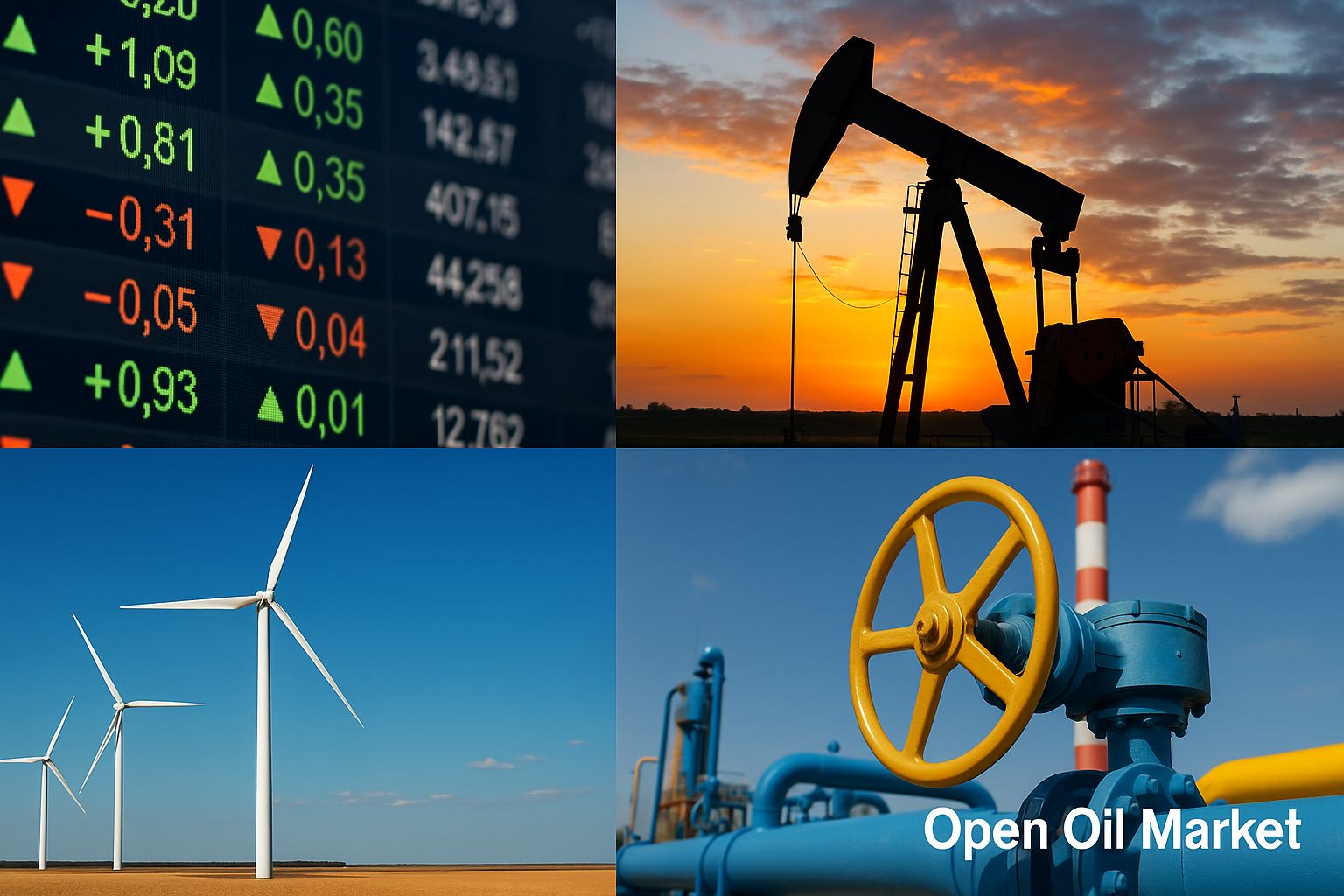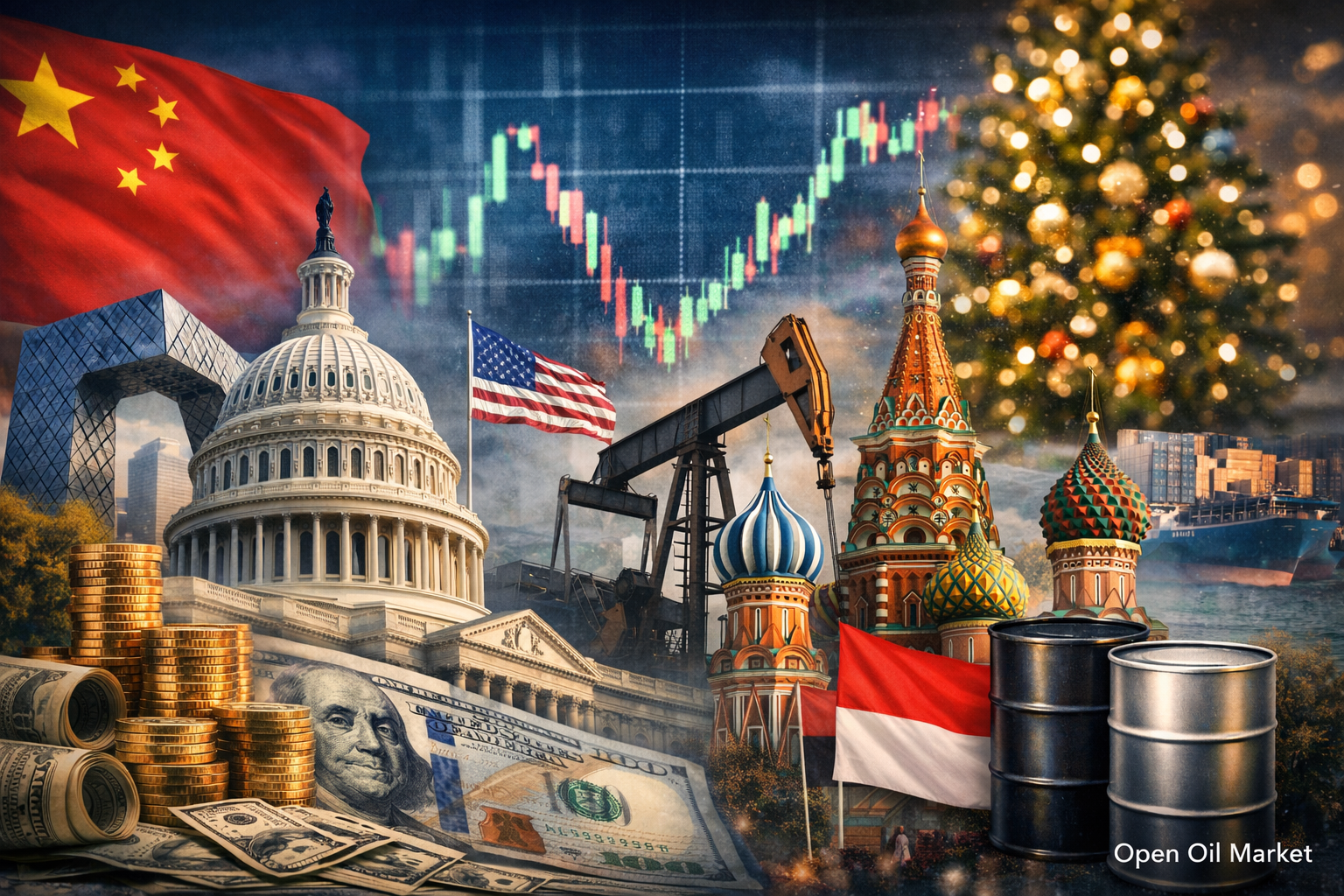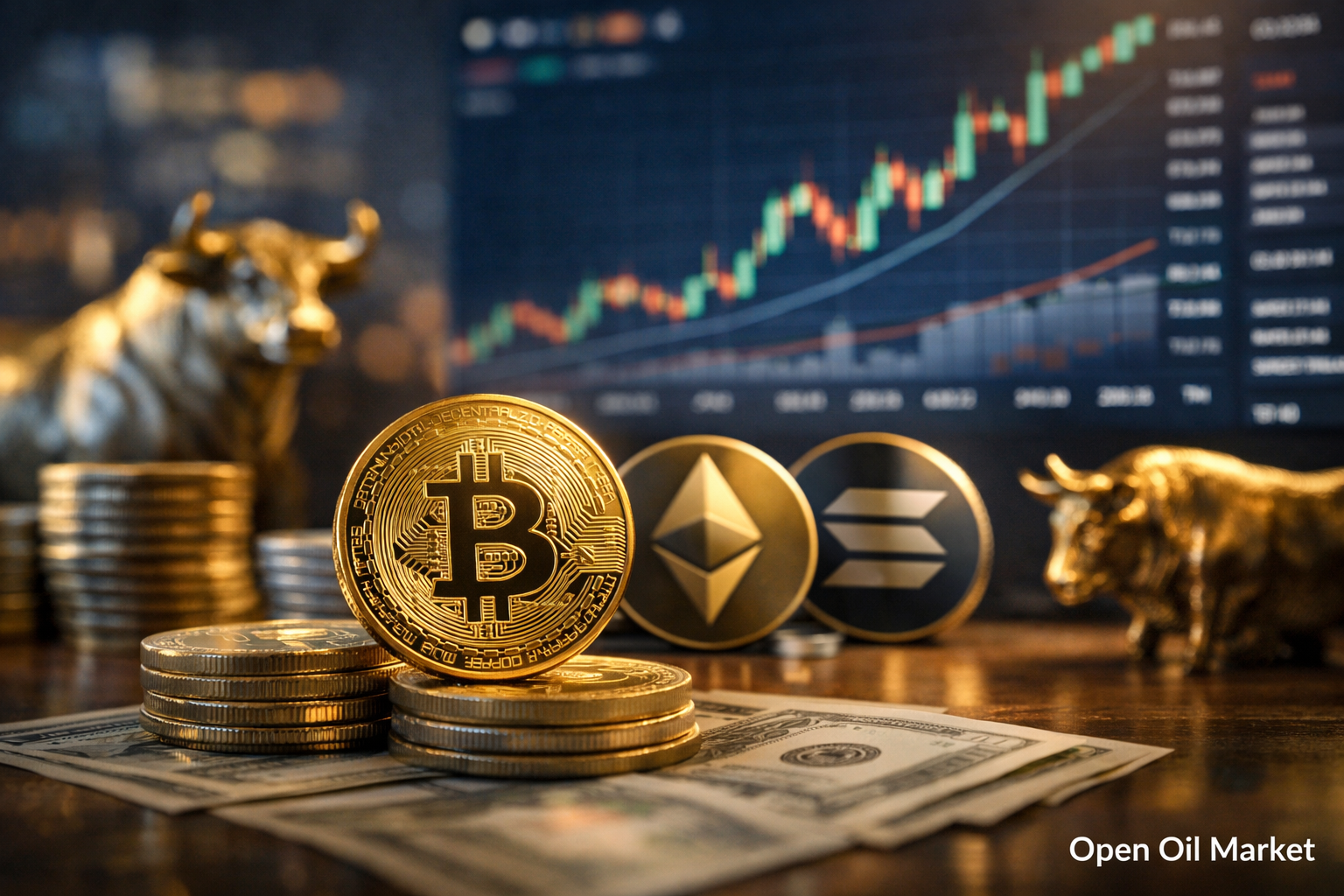
Global Energy Sector News as of October 20, 2025: Sanctions Against Russia, Reorientation of Oil and Gas Exports, Record Gas Reserves in Europe, Increasing Investments in Renewable Energy, and Stabilization of the Fuel Market in Russia.
By the end of October 2025, the global fuel and energy sector is experiencing a situation of relative stability in raw material markets amid ongoing geopolitical tensions. The West's sanction pressure on the Russian oil and gas sector continues to intensify: the United Kingdom has expanded sanctions against Russia's largest oil and gas companies, while Washington urges its allies to completely abandon imports of Russian energy resources. An unexpected factor has emerged in the form of India's position, which, under pressure from Western partners, has signaled its willingness to gradually reduce imports of Russian oil — a move that could dramatically reshape global commodity flows. Nevertheless, global oil and gas markets are demonstrating a moderately calm trajectory: oil prices remain near multi-month lows due to an expected surplus in supply, while the gas market is heading into winter with record reserves, providing a comfortable backdrop for consumers (unless severe cold alters the dynamics).
Meanwhile, the global energy transition is gaining momentum — investments in renewable energy are reaching new records, although traditional resources (oil, gas, coal) still play a key role in energy supply. In Russia, emergency measures to stabilize the domestic fuel market are yielding results: gasoline shortages are gradually easing, wholesale prices have retraced from peak levels, although the situation in remote regions still requires attention. During the recently concluded International Forum "Russian Energy Week 2025" held in Moscow from October 17, key topics included ensuring the domestic market with energy resources and reorienting export flows under sanctions. Below is a detailed overview of the main news and trends in the oil, gas, electricity, coal, renewable, and other raw material sectors as of the current date.
Oil Market: Sanction Pressure, Indian Factor, and Supply Surplus
Global oil prices continue to remain low, hovering near the lowest levels seen in recent months. The North Sea Brent is trading at around $61 per barrel, while American WTI is near $58, approximately 8–10% lower than a month ago. A minor price rally in September was followed by a decline, as traders anticipate a scenario in which oil supply will exceed demand in the fourth quarter. At the same time, geopolitical tensions persist, preventing prices from collapsing further. Several key factors are influencing the situation:
- Gradual Surplus and Slowing Demand. The OPEC+ oil alliance continues its phased increase in production, aiming to regain lost market shares. During the October 5 meeting, participants confirmed the increase of the aggregate quota by approximately +130,000 barrels per day starting in November. Concurrently, major producers outside OPEC, such as the USA and Brazil, have reached record levels of oil production. However, the growth in global demand is noticeably slowing: the International Energy Agency reduced its forecast for oil consumption growth in 2025 to approximately 0.7 million barrels per day (down from more than 2 million in 2023) due to the economic slowdown in Europe and China, as well as the effect of high prices from previous years, which have prompted energy-saving measures. As a result, commercial oil reserves globally are increasing, further applying downward pressure on prices.
- Sanctions and Conflict Risks. Intensifying sanction confrontations create additional uncertainty in the oil market. In mid-October, the UK imposed new restrictions against Russian companies (including Rosneft and Lukoil), while the USA insists on a full embargo by allies and curtailing circumvention schemes. Military factors are also heightening tensions: drone attacks on oil infrastructure continue, including on Russian territory. Recently, facilities in the Saratov region and Bashkortostan were damaged, leading to temporary shutdowns at certain refineries. In response, the Russian authorities announced the postponement of scheduled maintenance at refineries to maintain maximum fuel output for domestic needs and export. Collectively, sanctions and conflict-related risks increase volatility: any new tightening or unforeseen events could reduce market supply and trigger price surges.
- India's Position and Restructuring of Flows. The largest buyer of Russian oil, India, is signaling the potential revision of its import strategy. According to Western sources, New Delhi has expressed readiness to gradually phase out Russian barrels under pressure from its partners, with their share recently reaching about one-third of India's oil imports. Officially, India claims that prioritizing cheap fuel for the country is paramount; however, the mere fact of discussions regarding the withdrawal has alarmed the market. If Indian companies do begin to reduce purchases from Russia in the coming months, Moscow will have to seek new buyers for significant volumes or reduce production. On one hand, losing access to the Indian market will intensify pressure on Russian exports and impact oil and gas revenues. On the other hand, India's pivot away from Russian supplies would provide flexibility to the global market: released volumes could be replaced by suppliers from the Middle East, Africa, and the Americas, redirecting trading flows without causing oil shortages. News of India's potential "pivot" has temporarily supported prices; market participants believe Russia will have to reduce exports, implying a decrease in global supply. Consequently, the level of around $60 per barrel for Brent is currently viewed by analysts as a sort of price "floor": the surplus limit prevents oil from becoming significantly more expensive, while sanctions risks and potential market restructuring prevent prices from falling below this level for extended periods.
Thus, the oil market is balancing between fundamental pressures and political risks. A global surplus of oil keeps prices within a moderately low range; however, sanctions and possible shifts in trading structures (such as India’s potential withdrawal from Russian supplies) prevent prices from dropping more severely. Companies and investors are acting cautiously, considering the risks of further upheavals — from escalating sanctions to conflict escalations. The baseline scenario for the coming months anticipates continued relatively low prices if the supply surplus persists.
Natural Gas: Record Reserves, Low Prices, and Eastern Export Vector
The gas market is presenting a favorable situation for consumers, particularly in Europe, as of late October. The EU is entering winter with unprecedented gas reserves: underground storage facilities are over 95% full, significantly above last year’s levels. Proactive summer filling and mild autumn weather have enabled the accumulation of necessary reserves without emergency purchases. Consequently, wholesale gas prices in the EU remain relatively low, with the TTF index stabilizing around €30-35 per MWh — several times lower than the peaks of autumn 2022. The risk of a repeat of last year's gas crisis has decreased significantly, although the further development of the situation depends on winter weather conditions and uninterrupted LNG supplies. Several trends are emerging in the global gas market:
- Europe is Prepared for Winter. The high level of reserves in underground storage provides a robust buffer against cold temperatures. According to Gas Infrastructure Europe, the volume of gas in EU storage exceeds last year's figure by 5-7%. Even in low temperatures, a significant portion of winter demand can be met through stored resources, reducing the likelihood of fuel shortages. European industry and energy sectors also maintain moderate demand: the region's economy is growing slowly, and electricity generation from renewable sources was high in autumn, allowing for a reduction in gas consumption at power plants.
- Growing LNG Imports. Europe continues to increase its purchases of liquefied natural gas in the global market. The weakening demand for LNG in Asia has freed up additional volumes for European buyers. Suppliers from the USA, Qatar, and other countries have optimized delivery capacities to the EU. High LNG imports compensate for almost the entire cessation of pipeline supplies from Russia and cover the decline in production from North Sea fields. Diversification of sources keeps the market balanced and curbs sharp price spikes.
- Reorientation of Russian Exports. After losing the European market, Russia is redirecting its gas flows to the East. The flow through the "Power of Siberia" pipeline to China reached record levels in 2025, approaching its design capacity (~22 billion m3 per year). Concurrently, Moscow is advancing plans for the construction of the "Power of Siberia-2" pipeline through Mongolia, which is projected to come online by the end of the decade and partially substitute the lost exports to Europe. Additionally, Russian LNG supplies are increasing: the launch of new liquefaction lines in Yamal and Sakhalin has provided additional volumes of fuel primarily targeted at Asian countries (China, India, Bangladesh, etc.), which are willing to purchase gas at attractive prices. However, the total gas export from Russia remains below pre-sanction levels — Moscow's priority remains the domestic market and obligations to its close allies within the CIS.
In conclusion, the global gas sector is entering winter in a relatively balanced state. Europe possesses an unprecedented "safety cushion" of gas, significantly reducing the risks of price shocks — although it cannot completely rule them out, especially in case of abnormal cold or disruptions in LNG supplies. Simultaneously, global gas trade routes have undergone a radical transformation: the EU has almost completely abandoned Russian gas supplies, while Russia has redirected its exports to Asian markets. Investors are closely monitoring the evolving situation — from the commissioning of new LNG facilities worldwide to negotiations on expanding export infrastructure. Meanwhile, a combination of moderate demand and high reserves favors importers, keeping gas prices at comfortable levels.
Electricity Sector: Record Demand and Network Modernization
The global electricity sector is witnessing unprecedented growth in demand, presenting new challenges for infrastructure. In 2025, global electricity consumption is confidently heading towards a historical maximum: total generation is expected to exceed 30,000 TWh for the first time. Economic growth, digitalization, and widespread adoption of electric transportation drive increases in electricity consumption across all regions. The largest economies provide the main contributions: the USA is expected to generate about 4.1 trillion kWh (a new national record), while China is projected to exceed 8.5 trillion kWh annually. Rapid growth in energy consumption is also observed in countries across Asia, Africa, and the Middle East amid industrialization and population growth. To prevent power shortages and interruptions, proactive investments in energy supply are required. Key areas of focus within the electricity sector include:
- Network Renewal and Expansion. Growing loads require the modernization of electricity grids and the construction of new lines. Many countries are implementing programs to strengthen and digitalize energy networks, as well as introducing additional generating capacities. For example, US energy companies are investing billions of dollars into upgrading distribution networks to handle the load from data centers and electric vehicle charging stations. Similar infrastructure development projects are being executed in the EU, China, India, and other regions. Concurrently, intelligent "smart" grids and energy storage systems are becoming increasingly widespread. Major battery farms and pumped storage facilities smooth out peak loads and help integrate the growing volumes of renewable energy. Without infrastructure modernization, energy systems will struggle to reliably meet the record demand in the coming decades.
- Reliability and Investments. Despite record loads, the electricity sector as a whole demonstrates resilience, meeting the needs of the economy. However, continuous capital investments in grids, generation, and innovations are required to maintain reliability in power supply. Governments in numerous countries consider energy a strategic sector and, despite budget constraints, are increasing funding. The stable operation of energy systems is critical for the functioning of all sectors; hence, authorities strive to prevent disruptions. Investments continue in the construction of modern power plants (including nuclear and flexible gas blocks for standby) and the introduction of advanced network management technologies. The strategic priority is to enhance energy efficiency and reduce losses, allowing for the release of additional capacities.
Thus, the electricity sector is entering a new era of increased loads. Ensuring an uninterrupted operation of energy systems amid explosive growth in consumption will only be achievable through proactive infrastructure development. Continuing investments in networks, generating capacities, and innovations remains critically important to meet demand and avoid outages in the future.
Renewable Energy: Investment Boom and New Challenges
The renewable energy (RE) sector continues to experience rapid growth in 2025, driven by the energy transition. Governments worldwide are increasing support for green energy, viewing it as a engine for sustainable development. Investment volumes are hitting records, and the capacity of new solar and wind power plants is growing year by year. Consequently, the share of clean energy in the overall energy balance is steadily increasing, although the rapid expansion of RE is not without its challenges. The main trends in the sector are:
- Record Generation and Share of Renewables. Renewable sources are occupying an increasingly significant position in global generation. Preliminary estimates indicate that in 2025, around 30% of the world’s electricity will come from solar, wind, hydro, and other RE installations — up from approximately 25% five years earlier. In the EU, the acceleration of the “green” agenda has raised the share of renewable energy to new heights, gradually displacing coal and gas from the energy balance. Many developing countries are also investing more actively in solar and wind farms, seeking to reduce reliance on fuel imports.
- Government Support and Incentives. To achieve climate objectives, leading economies are expanding measures to support the green sector. The EU has adopted stricter emission reduction targets necessitating the accelerated introduction of zero-carbon capacities and the reform of the quota market. In the USA, the implementation of subsidy and tax incentive programs for RE and electric transportation continues (following the adoption of the IRA), fostering a flow of investments. China, India, and other major countries are also increasing funding for RE projects while simultaneously safeguarding energy systems from disruptions through the development of storage and backup capacities.
- Growth Challenges. The explosive rise of RE is accompanied by several challenges. Increased demand for equipment and raw materials leads to rising component costs: high prices for polysilicon (a key material for solar panels) and rare earth elements for wind turbines and batteries were recorded in 2024-2025. Infrastructure sometimes fails to keep pace with the introduction of new capacities — bottlenecks in electricity grids are hindering the connection of RE projects in some regions. Furthermore, the development of renewable energy necessitates addressing the issue of balancing: ensuring stability in power supply amid the variable nature of generation requires energy storage systems and flexible backup sources.
Thus, the renewable sector is experiencing an investment boom coupled with structural changes in energy. Provided that government support remains in place and infrastructure bottlenecks are eliminated, "green" energy will continue to gain strength. The industry faces the challenge of enhancing resilience and reducing technology costs to ultimately solidify renewable sources as a fundamental element of the global energy system.
Coal Market: Asian Demand vs. Global Phase-Out of Coal
The global coal market in 2025 is showcasing contradictory trends. In Asia, coal remains in high demand for electricity generation and industry, supporting current consumption levels and prices. At the same time, developed economies are rapidly phasing out coal generation as part of their climate agenda, negatively impacting the long-term outlook for the sector. The situation in the coal market is characterized by the following points:
- Asian Demand Supports the Market. Developing economies are not yet ready to fully abandon coal due to its availability and importance for energy systems. Coal-fired power plants help meet peak loads and ensure grid stability when renewables generate less energy. In 2025, imports of thermal coal in East Asia continued to rise: for example, in August, China, Japan, and South Korea collectively increased their purchases by about 20% compared to the previous month. In China, temporary tightening of safety requirements in mines reduced domestic production, which was offset by an increase in imports — pushing regional prices up (Australian Newcastle coal prices surged above $110 per ton, the highest in five months). Similarly, India and several other countries increased coal consumption to meet energy needs despite declaring a shift to cleaner energy.
- Long-Term Phase-Out of Coal. Concurrently, many countries are adhering to a gradual phase-out approach towards coal in order to reduce emissions. In the European Union, the share of coal generation has fallen below 10% (compared to about 15% a few years ago), and 11 EU countries plan to shut down coal-fired power plants entirely by 2030. Cheap natural gas and rapid growth of RE continue to displace coal even in its traditional markets. Historically coal-dependent countries are also reducing usage: for example, Germany is returning to its plans for accelerated closure of coal-fired power plants after temporarily increasing coal generation.
- Adaptation of the Sector. Coal companies find themselves caught between short-term profit and long-term risks. Elevated demand in Asia guarantees profitability today, but traditional markets are expected to shrink over the next 10-15 years due to decarbonization efforts. In this context, leading coal exporters (including Russia) are being compelled to adapt: looking for new buyers in developing countries while offering price discounts and addressing logistical challenges, or focusing on domestic needs. A promising direction is the "clean coal" approach — advanced technologies for deep processing and emission capture that can enable coal usage with diminished ecological impact. Additionally, the social aspect is pressing — ensuring employment and retraining for workers in coal-mining regions as production slows down.
Thus, the coal sector is balancing between current demand and the inevitable decline of coal’s role in the future. In the short term, the market is supported by Asian fuel demand, but global decarbonization trends unquestionably lead to a gradual phase-out of coal from energy. The fate of leading coal companies will depend on their ability to transform — to diversify their business and mitigate the social consequences of the energy transition.
Russian Fuel Market: Stabilization, Support for Refineries, and Price Control
In the autumn of 2025, the situation in Russia's domestic fuel product market is gradually normalizing after a severe fuel shortage at the end of summer. Emergency government measures — from export restrictions on fuel products to financial incentives — have allowed for the normalization of supply at gas stations. The shortage of gasoline has notably decreased, and wholesale prices for gasoline and diesel have fallen from peak levels, although supply remains unstable in some remote regions. In order to ensure market stability, authorities have extended and supplemented a range of stabilization measures:
- Export Restrictions. The temporary ban on exporting automotive gasoline imposed at the end of September has been extended until December 31, 2025. Similarly, restrictions on diesel fuel exports remain in place until the year’s end: independent traders are prohibited from selling diesel abroad, and oil companies can only export if they fully cover domestic needs. These steps are aimed at saturating the domestic market with fuel products and bringing prices down.
- Support for Refineries and Price Dampeners. Since October 1, the government has suspended the previously scheduled elimination of the price dampener mechanism. Thus, until further notice, payments to oil refineries (refineries) for fuel supplies to the domestic market continue. This "dampener" covers the difference between the higher export price and domestic prices, incentivizing oil companies to direct products to gas stations rather than abroad.
- Fuel Imports and Price Monitoring. To address local shortages, the easing of fuel imports of gasoline and diesel from friendly countries is being considered to promptly replenish resource deficits in certain regions. Concurrently, price monitoring at gas stations is being intensified: federal and regional authorities require fuel traders to eliminate unjustified price hikes. The government has already allocated additional funding to several regions (particularly border areas) to support uninterrupted fuel supply ahead of winter.
Thus, the Russian fuel and energy complex is entering the winter period under strengthened government control and support. This provides grounds for optimism that even amidst external pressures and price volatility, internal stability in supplying the country with oil and fuel products will be maintained. Market participants hope that the measures taken will prevent a recurrence of the fuel crisis and allow the winter season to pass without supply disruptions.




